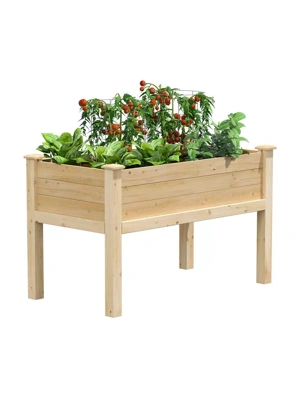Sand? Clay? Loam? What Type of Soil Do You Have?
Soil texture defined, plus a simple DIY soil test

A soil "mudshake" test will help you determine your soil type; instructions below.
Excerpted from Digging into Soil: A Garden Practicum, by Sarah Pounders, KidsGardening.org.
Although scientists use many methods to classify soil, gardeners usually describe soil using words like "sandy," "clay," and "loam." These terms describe a soil's texture. Knowing your soil's texture will help you predict how it will behave under different conditions. It's the first step toward creating the best conditions for the plants you're growing.
About Soil Texture
A soil's texture is determined by the mineral particle sizes it contains. Sand, silt, and clay — the mineral particles in soil — are derived from rock broken down over thousands of years by climatic and environmental conditions (rain, glaciers, wind, rivers, animals, etc.).
- The largest, coarsest mineral particles are sand. These particles are 2.00 to 0.05 mm in diameter and feel gritty when rubbed between your fingers.
- Silt particles are 0.05 to 0.002 mm and feel similar to flour when dry.
- Clay particles are extremely fine — smaller than 0.002 mm. They feel sticky in your fingers when wet and clump to the point that you can't see an individual particle without a microscope.
The proportion of these three mineral particle sizes determines the soil texture.
Soil Texture and Plant Growth
The ratio of particle sizes affects the amount of pore space — the space between the mineral particles — and therefore the amount of air and water a soil can hold. It also affects other characteristics. The smaller the soil particles, for example, the more they bind together when wet. Thus, clay soils can be sticky and difficult to work. They drain poorly and have less pore space for air, so roots may suffer from a lack of oxygen. However, clay soils are often rich in plant nutrients. In contrast, sandy soils can drain water too quickly for healthy plant growth and tend to be low in nutrients, but they are easier to work. Adding organic material can offset many of the problems associated with either extreme.
While there's no such thing as a perfect soil, different plants grow best in different types of soil. Most common garden plants prefer loam — soils with a balance of different-sized mineral particles (approximately 40% sand, 40% silt, and 20% clay) with ample organic matter and pore space. However, some plants grow better in sandy soils, while others are well-adapted to clay soils.
The U.S.D.A Natural Resources Conservation Service's Soil Textural Triangle classifies soils based on the percentage of sand, silt, and clay they contain.

What Kind of Soil Do You have? Find Out with a Mudshake!
- Fill a clear container with straight sides about two-thirds full of water; then add enough soil to nearly fill the jar. You can also add a pinch of laundry detergent to help the soil components separate well. Shake the jar vigorously and then set it in a place where it won't be disturbed.
- Observe the jar over the next couple of days as the particles settle into layers. The larger sand particles are heaviest and settle at the bottom, followed by a layer of silt, then topped by a layer of clay. The clay may stay suspended and cloud the water for several days, which is why the sample needs to sit undisturbed. Organic matter will float on or just below the water surface.
- Measure the height of each layer, as well as the overall height of the soil (including all layers). Then translate these measurements into percentages for each component by dividing the height of each component by height of the sample.
- Use the U.S.D.A Natural Resources Conservation Service's Soil Textural Triangle to determine the soil type by drawing lines to represent the percentages of the three components. The point where they converge is the soil texture; in this case, between a sandy loam and a sandy clay loam.

The sample on the left was taken from a perennial garden. The sample on the right is from a load of purchased topsoil. Both have been sitting undisturbed for five days. Note the organic matter floating in the left sample. On the right, clay particles haven't completely settled and are still clouding the water.

The height of the settled soil is approximately 2.75". The sand layer is 2" high, the silt layer is 0.25" high, and the clay layer is 0.5" high. Dividing the height of each layer by the entire height shows that the sample is about 70% sand, 10% silt, and 20% clay.

The red dot marks where the three lines converge, indicating the soil sample's texture.
Now that you've determined your soil's texture, you can take steps to maximize its ability to sustain healthy plant growth. Learn how: Building Healthy Soil.
Digging into Soil: A Garden Practicum is an activity guide written by KidsGardening in cooperation with The Lower Sugar River Watershed Association. It is designed to cultivate a new generation that is inspired to make collective choices that preserve and improve existing soil resources. KidsGardening is national nonprofit that has led the youth gardening movement since 1982. The Lower Sugar River Watershed Association is a nonprofit volunteer conservation organization based in south central Wisconsin.
Last updated: 06/28/2023
Print this Article:
Related items
Get the Dirt
Stay up to date on new articles and advice. Please fill out the information below.










